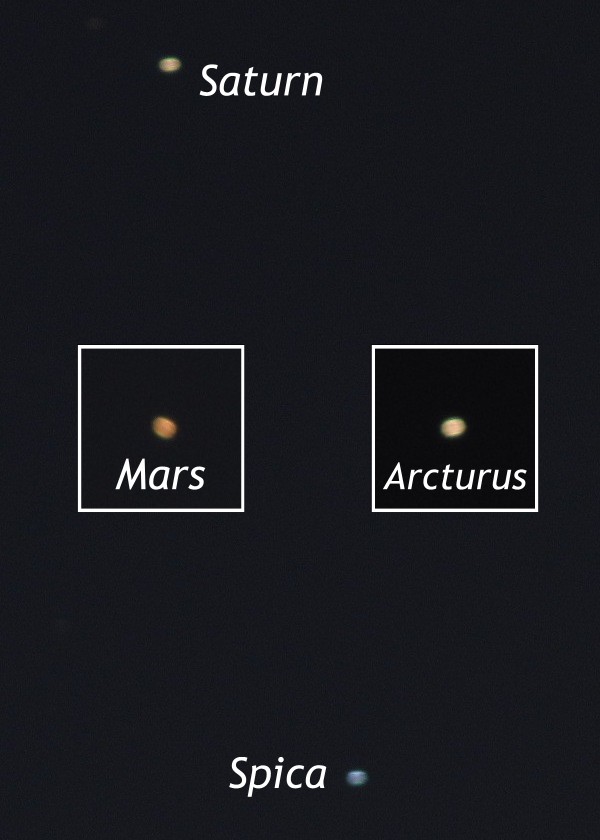However, my camera flipped from manual focus (on infinity) to autofocus (on whatever), as it tends to do if not touched for a minute. To my surprise, the effect was most pleasing.

I was first of all struck by how red the star Delta-2 Lyrae appeared (the contrast has been enhanced in the picture below, but is clear enough in the original photograph.) From Jim Kaler’s list of stars, I find that it is an M4 bright giant, which is pretty cool and red for a giant star. There are even cooler red dwarfs, but they require quite a powerful telescope to find. Epsilon is also seen to be double, even at this amount of defocus.
The explanation is quite simple, namely that a point-focused star tends of overload the red, green, and blue channels all together, so it will come out as white. Spread the light, and you get the colour.
Zeta Lyrae is also double, observable in binoculars and with my camera (when in focus!), while Beta is a double so close that even our most powerful telescopes will not resolve it. It gives itself away by the fact that as the two rotate about each other, first one, then the other component, undergoes a periodic eclipse [1].
I then tried this trick on some other stars and planets. The picture below shows the blue star Spica along with the yellowish planet Saturn, which are quite close to each other at the present time.
On top of this I have overlaid the orange star Arcturus, and the Red Planet Mars.

Arcturus is located at a distance of 37 light years, and became famous when its light was used to open the 1933 World’s Fair in Chicago, by triggering a photocell which would switch on all the lights. It was chosen because at that time it was thought to be 40 light years away, which if so would have meant that light had left the star at about the time of the previous Chicago fair in 1893.
According to the Irish Song Galway Bay:
Yet the strangers came and tried to teach us their way.However, according to one website, the location of the telescope used to focus the star’s light was clouded over, so they threw the switch manually.
They scorned us just for bein’ what we are.
But they might as well go chasing after moon beams,
Or light a penny candle from a star.
In that case, the Irish song still stands uncorrected!
[1] It can be resolved by interferometry with more than one telescope, as in this video relating to:
First Resolved Images of the Eclipsing and Interacting Binary β Lyrae
The Astrophysical Journal Letters Volume 684 Number 2
M. Zhao et al. 2008 ApJ 684 L95 doi:10.1086/592146
http://commons.wikimedia.org/wiki/File:Betlyr2b.theora.ogv





Comments